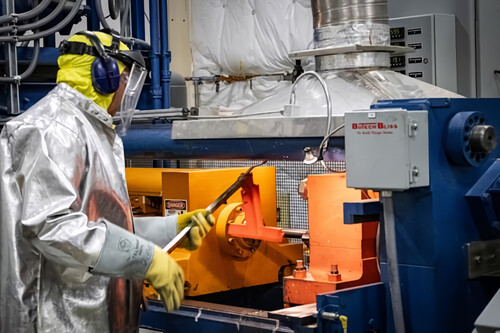Over the past five years, modular and small fission reactors (SMRs) have garnered attention. These machines are set to replace conventional fission reactors because, in general, they’re smaller, cleaner, safer, and cheaper. However, innovation in this field is now moving beyond reactors.
Research organizations and companies are increasingly focusing on the fuel used in fission reactors. Traditional fission reactor fuel consists of slightly enriched uranium oxide powder (no more than 5%).
This means that at most 5% of the total mass of uranium is the uranium-235 isotope (the “easy” fissionable isotope), while the rest is mostly uranium-238. Though uranium-235 comprises a small portion, it’s sufficient to sustain the nuclear fission reaction. This ratio also aligns with international regulations for nuclear fuel production. An interesting note: Nuclear weapons use highly enriched uranium, with uranium-235 comprising over 90% of the total mass.
Lightbridge Fuel Is Ready to Replace Conventional Fuel
To produce the fuel rods used in most operating nuclear reactors, uranium must undergo mixing, pressing, sintering, grinding, and inspection. These processes are carried out in the ceramic area of the factory, followed by mechanical production to create the fuel elements used in nuclear power plants. Lightbridge Corporation’s Lightbridge Fuel takes a different approach.
Lightbridge Fuel’s main innovation is the use of coextrusion in its production process.
Designed for use in existing light water reactors and pressurized heavy water reactors, Lightbridge Fuel aims to replace traditional fuel rods. The main innovation is the use of coextrusion in its production process.
This process involves coating cylindrical pellets of depleted uranium and zirconium with a zirconium alloy and then applying high pressure in a die to form a cylindrical rod about 7.8 feet long.
The zirconium alloy cladding is critical to containing radioactive fuel within the reactor. But most importantly, Lightbridge Fuel offers superior safety, efficiency, and performance compared to conventional fuel, according to its creators.
“By integrating the uranium-zirconium alloy with nuclear-grade cladding material, we’re advancing the safety, efficiency, and performance of nuclear fuel,” Scott Holcombe, vice president of engineering at Lightbridge Corporation, said. If Lightbridge Fuel passes all relevant safety tests and regulatory approvals, it could also be used in modular and SMR reactors.
Image | Lightbridge Corporation



Log in to leave a comment